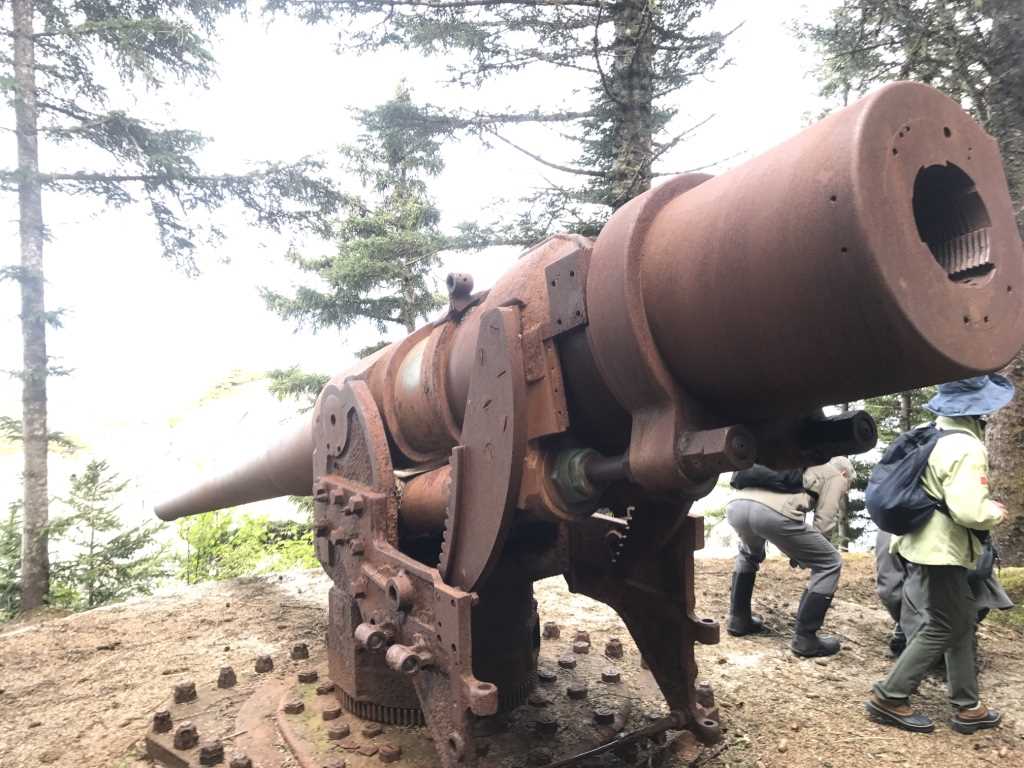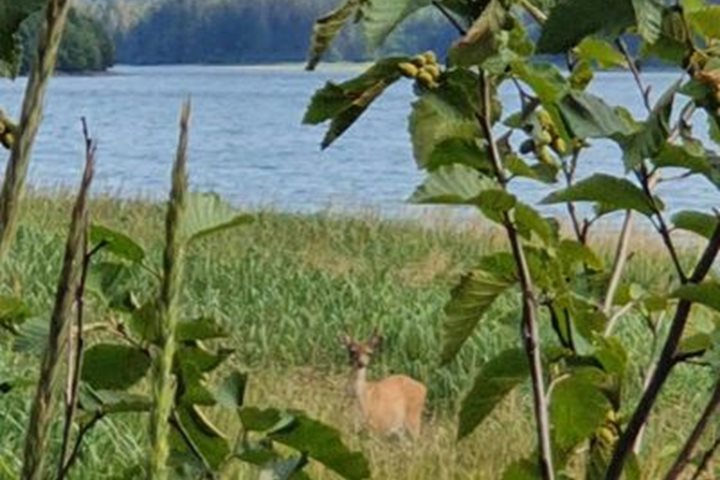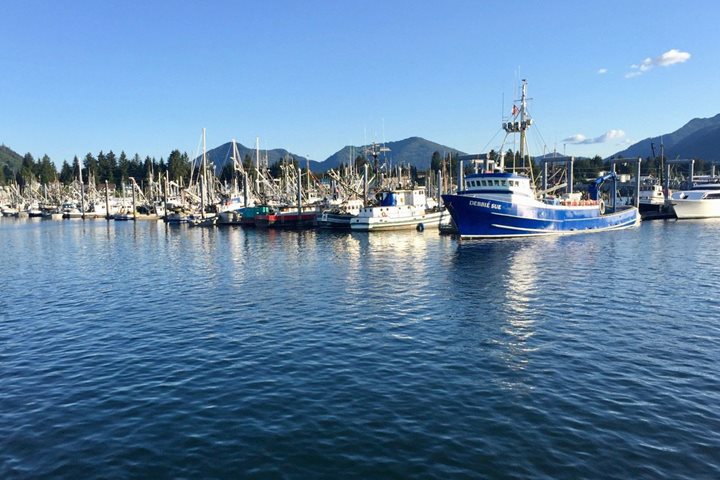Waking up to a maritime climate guests who chose to venture beyond the comforts of the National Geographic Sea Lion were treated to a morning of hiking and kayaking at George Island. Sprinkled throughout Coastal Alaska are remnants of World War II, eroding bunkers, decaying living quarters and on George Island, a 6-inch barreled, 50-caliber gun. During the height of World War II Alaska had dispersed bases stationed by 20 to 110 men at any given time depending on their size and location. George Island was ideal because of its location, a likely location to spot any enemy vessel and because of its proximity to the preexisting fish cannery run by P.E. Harris and Company at Port Althorp, on the northeast corner of Chicagof Island. From George Island, one can see past Cross Sound and out to the Pacific Ocean on a clear day. This day, was one of those - the Fairweather Mountain Range, Brady Glacier and Point Spencer were all visible, as was the expansive Pacific.
Beginning on November 1, 1941, Port Althorp began its transition to a Naval Section Base, starting with removal of snow and thawing of pipes. After the attack on Pearl Harbor in Hawaii, the initiation of operations became a priority but due to an urgency throughout the entire country, money ran short. The solution was to house the defense guns for that area on George Island. This was no easy feat - fearing low morale due to lack of mail and resupply, in addition to transportation and equipment issues creativity became a necessity, and the Navy turned to the nearby communities of Elfin Cove and Pelican for assistance. Alaska went on full alert after the Japanese attacked a Naval Air Station at Dutch Harbor on June 3rd of 1942 and the completion of defense weapons throughout Alaska became a priority once again. Bringing in the gun piece by piece over muskeg and deep ravines 18 tons of gun parts made it to its emplacement in August of 1942 and fired its first shots in early September of 1942.
Life for the civilians and soldiers was difficult in this area and weather often proved their biggest challenge. Facing storms, freezing and thawing conditions and a fire in the mess hall the 80 men at Port Althorp and 20 on George Island continued to build and fortify this area, including adding two additional 20mm guns on George Island. The post was put on high alert after the battle that took Attu from the Japanese in May of 1943, but the closest to action the troops on George Island saw was from a possible sighting of a submarine, which turned out of be no more than a floating fish trap. On May 26, 1944 all enlisted personnel were informed there were to be transferred and George Island and Port Althorp were decommissioned by the Naval Auxiliary Air Facility on June 1st of 1944.







